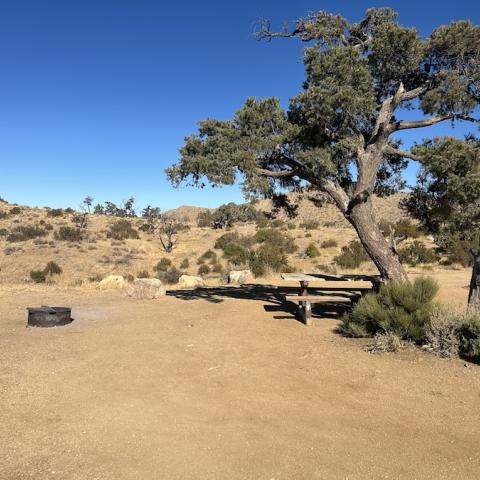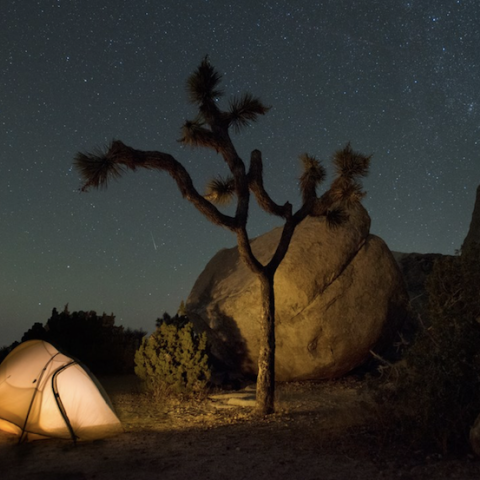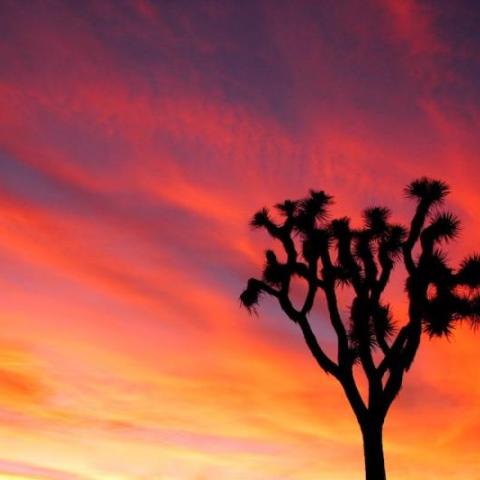Editor's note: As the Interior Department nears a decision on the proposed Soda Mountain Solar project near Mojave National Preserve in California, Mark Butler, a former National Park Service superintendent, believes the project should not be permitted in its current location.
In my career as a caretaker of America’s national parks – including years spent as the superintendent of Joshua Tree National Park – I have been honored with the duty to follow the fundamental principle of using sound science and balanced policies to guide decisions affecting these lands that are owned by all Americans.
On occasion, I’ve witnessed politically appointed officials brushing aside this responsibility so that the ends would justify the means. One of the most egregious examples of this was the failed effort in 2005 when Administration appointees in the Department of Interior attempted to secretly rewrite the National Park Service’s Management Policies so that development could trump preservation, and so regulations against commercialization of the parks could be eased. NPS employees blew the whistle and Americans and elected officials of all political stripes loudly objected to an unbalanced change to the policies of our national parks. I believe this experience provided an important political lesson: when our irreplaceable national parks are threatened by the officials who are entrusted to preserve them, communities will take a stand.
With this in mind, I have great hope that today’s DOI, on the eve of the NPS’s 100th birthday, will decide to follow science and current policy regarding upcoming decisions facing national parks. One of the most important decisions concerns the Mojave National Preserve, a 1.6-million-acre jewel in the California desert. DOI is nearing a final decision on the Soda Mountain Solar project, an industrial-scale project proposed adjacent to the preserve’s northwest border, on Bureau of Land Management land.
Since 2007, NPS scientists objected to the project location, a position also held by local businesses, recreationists, scientists, conservation groups, and BLM’s own Desert Advisory Council. Documents show that park managers have for years pleaded with DOI officials to relocate this project, and for good reasons.
Among the many impacts, DOI must consider the protection of the iconic desert bighorn sheep that have naturally recolonized the Soda Mountains. Scientists have concluded that the Soda Mountain project would destroy the critical foraging habitat that supports reproduction of the Bighorn, “potentially increasing the local extinction risk of the Soda Mountain population.” The project would also block access to existing I-15 underpasses that biologists have identified as the best and only financially realistic option for encouraging north-south bighorn migration, critical to the existence of this population. NPS plans to invest more than half-a-million dollars to encourage migration using the underpasses would be made pointless by the project.
Decades ago, the California Department of Fish and Wildlife studied the Soda Mountains and determined that “construction of any facilities that would further restrict opportunities for movement would be detrimental to the persistence of Bighorn sheep.” Recently, world-renowned scientists Drs. Thomas Lovejoy and E.O. Wilson proclaimed that this region must be protected from development.
Not long ago, the DOI made big promises that it will not advance projects with significant, unavoidable impacts. The NPS, citing official policies, concluded the Soda Mountain “project is proposed for an inappropriate location.” BLM’s own environmental review concluded that the project “would have a substantial adverse effect on Bighorn sheep.” Still, this proposal could be approved. Approving a project that harms our national parkland and wildlife – using taxpayer subsidies – just adds insult to injury.
I am hopeful that DOI officials will consider Mojave National Preserve and its iconic desert bighorn and respect the conclusions of the nation’s preeminent scientists – including their own career scientists – who fully appreciate the fundamental scientific principle of letting facts guide decisions, not political convenience.
Mark Butler retired from the National Park Service in 2014 after 37 years of public service.






 Support Essential Coverage of Essential Places
Support Essential Coverage of Essential Places







Comments
It has been very difficult to find a map showing the location of this project. But using descriptions in this and some other articles, I found that it is to the northwest of Mojave Preserve between the towns of Baker and Zzyzx. While we certainly need to develop alternative energy sources, I hope we will always seek the best balance between energy needs and wise conservation of other resources. This is just one more example of the constant tug of war between those two goals.